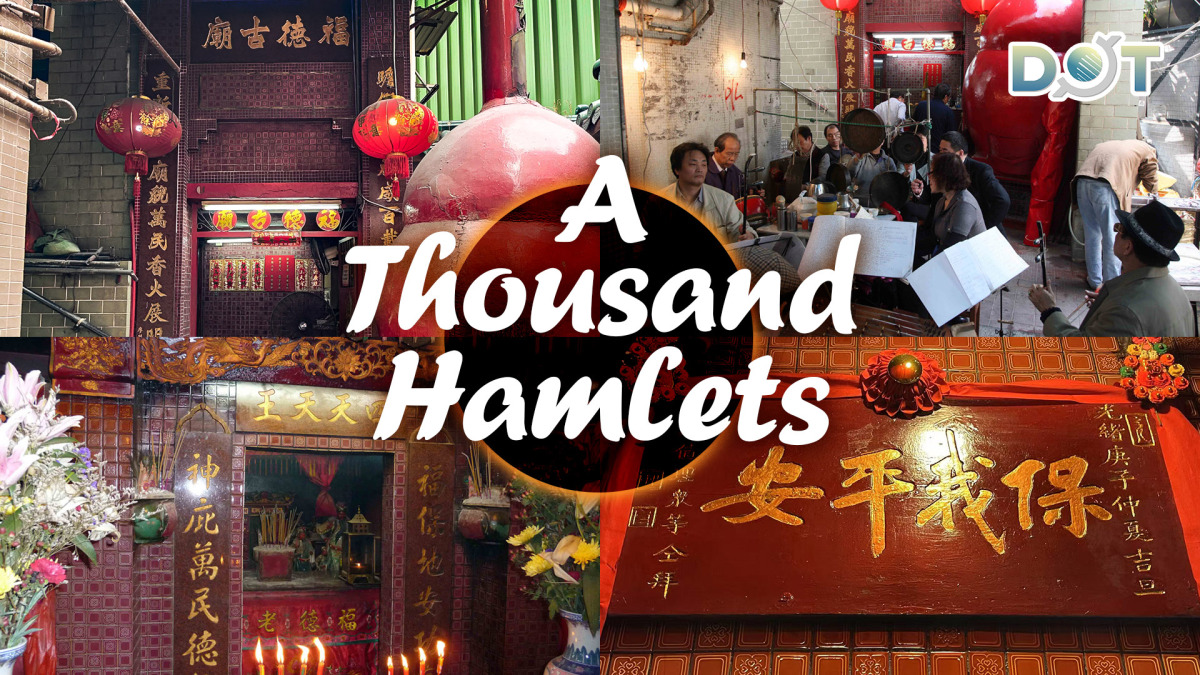
By Liang Gangyi and Liu Yu
Tsim Sha Tsui Fook Tak Ancient Temple, situated at 29 Ashley Road, Hong Kong, adjacent to Haiphong Road Market, is a historic Chaozhou community temple with multifaceted deities.
Though briefly mentioned in Lu Jin's Hong Kong Temple Delights (香港廟趣) and Siu Gwok-gin's Chronicles of Yau Tsim Mong District (油尖旺區風物志), its significance as Tsim Sha Tsui's sole multi-deity temple remains underexplored. This study employs historiographical analysis and fieldwork, including interviews with temple custodian Lin San, to trace its historical evolution, diverse beliefs, and socio-cultural role in Hong Kong's urbanization.

Originally a land temple near Kowloon Wharf (now Peking/Canton Road junction), Fook Tak ("Earth God") dates to at least 1900, per its Guangxu-era plaque. It served Tsim Sha Tsui villagers and later Chaozhou dockworkers, who termed the deity "Bo Gong" (Earth God), reflecting their cultural influence. Lin San notes that Chaozhou laborers, forming a majority of early worshippers, relied on Bo Gong for communal safety—a theme echoed in a 1941 legend. During WWII, worshippers claimed Bo Gong deflected Japanese bombs (likely referencing December 1941 air raids) as he appeared atop the temple, sword and fan in hand. A surviving witness, Zeng Heqing, later joined the temple council. While the tale's accuracy is debatable, it underscores the deity's symbolic role in fostering resilience among vulnerable dockworkers.
Hong Kong's harbor-city identity shaped the temple's eclectic deities. Alongside Bo Gong, it housed Mazu (protector of seafarers) and Guan Gong (patron of trade guilds), mirroring the mixed demographics of sailors, laborers, and merchants. This fusion highlights 19th–20th-century Hong Kong's transition from a maritime hub to a commercial metropolis. Post-1978 reconstruction expanded the pantheon to include Buddhist figures (Rulai, Guanyin), Taoist deities (God of Wealth), and local icons like Wong Tai Sin, reflecting Hong Kong's cultural pluralism.
The temple historically unified Chaozhou immigrants through shared rituals, such as prayers for safe voyages. Lin San suggests early dockworkers, possibly linked via kinship or triads, used the temple to forge communal bonds. By the 20th century, management shifted to Chaozhou elites like merchants Ma Songshen and Liu Lit-man. Leadership succession retains clan ties: current chairman Guo Miansheng is related to Ma's family, while retired police officers also serve on the council. Annual gatherings sustain Chaozhou identity among descendants, though urbanization has diluted traditional practices.
Post-1970s, the temple's role shifted from clan-centric worship to a repository for household deities abandoned by younger generations. Lin San notes declining attendance, with only elderly volunteers and a skeleton staff managing operations. To survive, the temple hosts festivals like the Obon Ceremony (lunar July) and leverages tourism. Its inclusion in the government's "Hong Kong Fun in 18 Districts" campaign—alongside landmarks like Kowloon Mosque—highlights efforts to reinvent itself amid urban change.
Fook Tak Temple embodies Hong Kong's immigrant history and adaptive spirit. Once a sanctuary for Chaozhou dockworkers, it now mirrors the city's multiculturalism, where diverse faiths coexist. Yet its struggle to retain relevance underscores tensions between tradition and modernity. As a living archive of communal memory, the temple remains a testament to Hong Kong's evolving identity.
Liang Gangyi holds an MA in History from the University of Lancaster and MA in Hong Kong History from the University of Hong Kong.
Liu Yu is the lead editor of the cultural commentary "A Thousand Hamlets."
The views do not necessarily reflect those of DotDotNews.
Related News:




















Comment